An Introduction to Graph Databases
- 1. www.Objectivity.com An Introduction To Graph Databases Leon Guzenda & Nick Quinn August 20, 2013
- 2. Overview • Introductions • Graph Theory • Commonly Used Graph Algorithms • Graph Databases • Current Implementations • Use Cases • Hands-On Tutorial
- 3. We Are From Objectivity Inc. Company • Objectivity, Inc. is headquartered in Sunnyvale, CA. • Established in 1988 to tackle database problems that network/hierarchical/relational and file-based technologies struggle with. • Objectivity has over two decades of Big Data and NoSQL experience Products • Develops NoSQL platforms for managing and discovering relationships and patterns in complex data: • Objectivity/DB - an object database that manages localized, centralized or distributed databases • InfiniteGraph - a massively scalable graph database built on Objectivity/DB that enables organizations to find, store and exploit the relationships in their data Markets • The Big Data market is projected to be around $12B in 2012, with a CAGR of 28% over the next five years. • 40% per year data growth, cloud adoption, mobile usage and improved real-time analytics underpin Objectivity’s growth opportunities as a Big Data analytics enabler. Customers • Embedded in hundreds of enterprises, government organizations and products - millions of deployments. Financials • Consistently generates increased revenues. • Privately held by the employees and a few venture capital companies. Copyright © Objectivity, Inc. 2012
- 4. GRAPH THEORY
- 5. The History of Graph Theory 1736: Leonard Euler writes a paper on the “Seven Bridges of Konisberg” 1845: Gustav Kirchoff publishes his electrical circuit laws 1852: Francis Guthrie poses the “Four Color Problem” 1878: Sylvester publishes an article in Nature magazine that describes graphs 1936: Dénes Kőnig publishes a textbook on Graph Theory 1941: Ramsey and Turán define Extremal Graph Theory 1959: De Bruijn publishes a paper summarizing Enumerative Graph Theory 1959: Erdos, Renyi and Gilbert define Random Graph Theory 1969: Heinrich Heesch solves the “Four Color” problem 2003: Commercial Graph Database products start appearing on the market
- 6. Graph Theory Terminology... VERTEX: A single node in a graph data structure EDGE: A connection between a pair of VERTICES PROPERTIES: Data items that belong to a particular Vertex or Edge WEIGHT: A quantity associated with a particular Edge GRAPH: A network of linked Vertex and Edge objects Vertex 1 City: San Francisco Pop: 812,826 Edge 1 Road: I-101 Miles: 47.8 Vertex 2 City: San Jose Pop: 967,487
- 7. ...Graph Theory Terminology... SIMPLE/UNDIRECTED GRAPH: A Graph where each VERTEX may be linked to one or more Vertex objects via Edge objects and each Edge object is connected to exactly two Vertex objects. Furthermore, neither Vertex connected to an Edge is more significant than the other. DIRECTED GRAPH: A Simple/Undirected Graph where one Vertex in a Vertex + Edge + Vertex group (an “Arc” or “Path”) can be considered the “Head” of the Path and the other can be considered the “Tail”. MIXED GRAPH: A Graph in which some paths are Undirected and others are Directed.
- 8. ...Graph Theory Terminology LOOP: An Edge that is doubly-linked to the same Vertex MULTIGRAPH: A Graph that allows multiple Edges and Loops QUIVER: A Graph where Vertices are allowed to be connected by multiple Arcs. A Quiver may include Loops. WEIGHTED GRAPH: A Graph where a quantity is assigned to an Edge, e.g. a Length assigned to an Edge representing a road between two Vertices representing cities. HALF EDGE: An Edge that is only connected to a single Vertex LOOSE EDGE: An Edge that isn't connected to any Vertices. CONNECTIVITY: Two Vertices are Connected if it is possible to find a path between them.
- 9. COMMONLY USED GRAPH ALGORITHMS Mac Evans
- 10. Commonly Used Graph Algorithms... CONNECTEDNESS: Check whether or not a set of nodes in a Graph are connected. All of the nodes in the graph below are connected, e.g. A to B, A to C via B etc. SHORTEST PATH: The path between two nodes that visits the fewest intermediate nodes. In the graph above, A->B->C->D is shorter than A->B->C->B->D (disallowing loops) NODE DEGREE: The degree of a node in a network is a count of the number of connections it has to other nodes. The degree distribution is the probability distribution of these degrees in the whole network. In the graph below, A and D have a node degree of 1. B and C have a node degree of 3.
- 11. ...Commonly Used Graph Algorithms... CENTRALITY: An assessment of the importance of a node within a network. Degree Centrality is the simplest, being a count of the number of connections that a node has. It may be expressed as “Indegree” (# of incoming connections) and “Outdegre” (# of outgoing connections).
- 12. ...Commonly Used Graph Algorithms... CLOSENESS CENTRALITY: Closeness considers the shortest paths between nodes and assigns a higher value to nodes that can be used to reach most other nodes most quickly. In the graph below, node A has the greatest centrality as all other nodes can be reached in one “hop”, whereas others require 1 hop to A or 2 hops to any other node. A
- 13. Commonly Used Graph Algorithms... CONNECTEDNESS: Check whether or not a set of nodes in a Graph are connected. All of the nodes in the graph below are connected, e.g. A to B, A to C via B etc. SHORTEST PATH: The path between two nodes that visits the fewest intermediate nodes. In the graph above, A->B->C->D is shorter than A->B->C->B->D (disallowing loops) NODE DEGREE: The degree of a node in a network is a count of the number of connections it has to other nodes. The degree distribution is the probability distribution of these degrees in the whole network. In the graph below, A and D have a node degree of 1. B andC have a node degree of 3.
- 14. ...Commonly Used Graph Algorithms... SHORTEST PATH: The path between two nodes that visits the fewest intermediate nodes. In the graph below, A->B->C->D is shorter than A->B->C->B->D (disallowing loops) AVERAGE PATH LENGTH: The average of all path lengths between all pairs of nodes in a graph. TRANSITIVE CLOSURE: The process of exploring a graph by traversing relationships until all nodes have been visited, but without revisiting nodes that are joined together in loops. In the graph above, A->B->C->D is a transitive closure.
- 15. ...Commonly Used Graph Algorithms... GRAPH DIAMETER (or SPAN): The greatest distance between any pair of nodes in a graph. It is computed by finding the shortest path between each pair of nodes. The maximum of these path lengths is a measure of the diameter of the graph. The diameters of the two graphs below are 2 and 5.
- 16. ...Commonly Used Graph Algorithms... BETWEENESS CENTRALITY: A centrality measure of a node within a graph. Nodes that have a high probability of being visited on a randomly chosen short path between two randomly chosen nodes have a high “betweeness” In the graph below, node D has the highest betweeness centrality.
- 17. GRAPH DATABASES
- 18. Recognizing Graphs In Object Models... Tree Structures 1-to-Many Object Class A
- 19. ...Recognizing Graphs In Object Models... Tree Structures 1-to-Many Relationship Data Object Class A Object Class A
- 20. Recognizing Graphs In Object Models... Tree Structures 1-to-Many Relationship Data Object Class A Object Class A Graph (Network) Structures Many-to-Many Object Class A
- 21. Recognizing Graphs In Object Models... Tree Structures 1-to-Many Relationship Data Object Class A Object Class A Graph (Network) Structures Many-to-Many Relationship Data Object Class A Object Class A Copyright © Objectivity, Inc. 2012
- 22. Why Do We Need Graph DBMSs?... Relational Database Think about the SQL query for finding all links between the two “blue” rows... Good luck! Table_A Table_B Table_C Table_D Table_E Table_F Table_G Relational databases aren’t good at handling complex relationships!
- 23. ...Graph DBMSs Are Designed To Handle Relationships Relational Database Think about the SQL query for finding all links between the two “blue” rows... Good luck! Table_A Table_B Table_C Table_D Table_E Table_F Table_G Objectivity/DB or InfiniteGraph - The solution can be found with a few lines of code A3 G4
- 24. Graph Databases • Data model: – Node (Vertex) and Relationship (Edge) objects – Directed – May be a hypergraph (edges with multiple endpoints) • Examples: – InfiniteGraph, Neo4j, OrientDB, AllegroGraph, TitanDB and Dex VERTEX 2 N EDGE
- 25. Graph DBMSs Use A Very Simple Object Model Tree Structures 1-to-Many Relationship Data Object Class A Object Class A Graph (Network) Structures GRAPH MODEL Many-to-Many Relationship Data EDGE Object Class A Object Class A VERTEX Copyright © Objectivity, Inc. 2012
- 26. Basic Capabilities Of Most Graph Databases... Rapid Graph Traversal Start Finish
- 27. ...Basic Capabilities Of Most Graph Databases... Rapid Graph Traversal Inclusive or Exclusive Selection X Start Start X
- 28. ...Basic Capabilities Of Most Graph Databases Rapid Graph Traversal Inclusive or Exclusive Selection X Start Start X Find the Shortest or All Paths Between Objects Start Finish
- 29. InfiniteGraph Capabilities Parallel Graph Traversal Inclusive or Exclusive Selection X Start Start X Shortest or All Paths Between Objects Computational & Visualization Plug-Ins Compute Cost To Date Start Finish Start Visualize Copyright © Objectivity, Inc. 2013
- 33. Graph Databases Compared [UNSW] DATA STORAGE FEATURES
- 34. Graph Databases Compared [DZone] Source: http://goo.gl/ni4eoE
- 35. Graph Databases – Pros and Cons • Strengths: – Extremely fast for connected data – Scales out, typically – Easy to query (navigation) – Simple data model • Weaknesses: – May not support distribution or sharding – Requires conceptual shift... a different way of thinking VERTEX 2 N EDGE
- 36. USE CASES
- 37. Example 1 - Market Analysis The 10 companies that control a majority of U.S. consumer goods brands
- 38. Example 2 - Demographics Used in social network analysis, marketing, medical research etc.
- 39. Example 3 - Seed To Consumer Tracking ?
- 40. Example 4 - Ad Placement Networks Smartphone Ad placement - based on the the user’s profile and location data captured by opt-in applications. • The location data can be stored and distilled in a key-value and column store hybrid database, such as Cassandra • The locations are matched with geospatial data to deduce user interests. • As Ad placement orders arrive, an application built on a graph database such as InfiniteGraph, matches groups of users with Ads: • Maximizes relevance for the user. • Yields maximum value for the advertiser and the placer.
- 41. Example 4 - Ad Placement Networks Smartphone Ad placement - based on the the user’s profile and location data captured by opt-in applications. • The location data can be stored and distilled in a key-value and column store hybrid database, such as Cassandra • The locations are matched with geospatial data to deduce user interests. • As Ad placement orders arrive, an application built on a graph database such as InfiniteGraph, matches groups of users with Ads: • Maximizes relevance for the user. • Yields maximum value for the advertiser and the placer.
- 42. Example 5 - Healthcare Informatics Problem: Physicians need better electronic records for managing patient data on a global basis and match symptoms, causes, treatments and interdependencies to improve diagnoses and outcomes. • Solution: Create a database capable of leveraging existing architecture using NOSQL tools such as Objectivity/DB and InfiniteGraph that can handle data capture, symptoms, diagnoses, treatments, reactions to medications, interactions and progress. • Result: It works: • Diagnosis is faster and more accurate • The knowledge base tracks similar medical cases. • Treatment success rates have improved.
- 43. Example 6 - Big Data Analytics
- 44. Example 7 – Visual Analytics
- 45. Hands On With A Graph Database • We'll be using InfiniteGraph today • You'll need a Java Development environment on your machine • If you haven't downloaded InfiniteGraph already, please go to: http://goo.gl/XzJo6T [https://download.infinitegraph.com/index.aspx] • We'll be covering a HelloGraph and a more complex sample program
Editor's Notes
- #44: By initiating a polyglot approach – One can utilize existing SQL based architecture and databases while still gaining the competitive advantage that the latest NOSQL technologies provide. One example of this Polyglot approach is shown here. The technology(ies) used would be dependent on the use case.
- #45: Note Object Oriented Databases as NOSQL here.

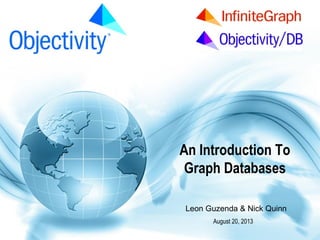
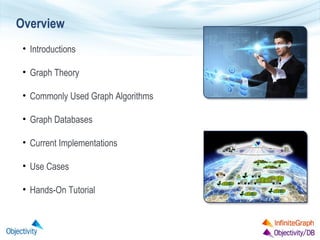
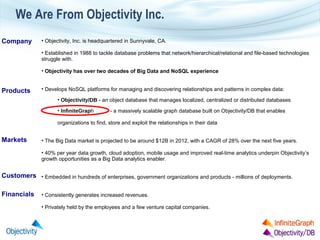
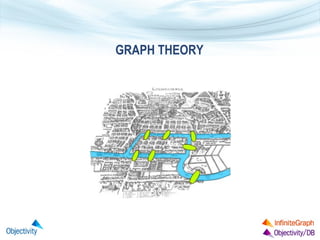
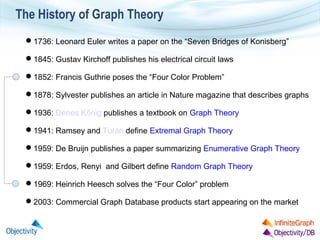
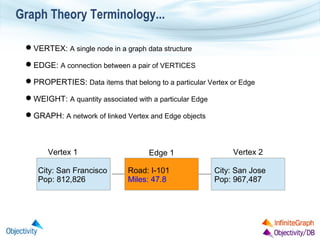
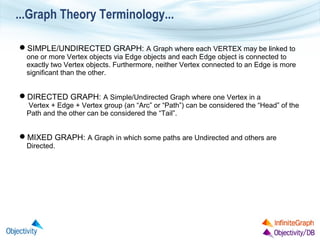

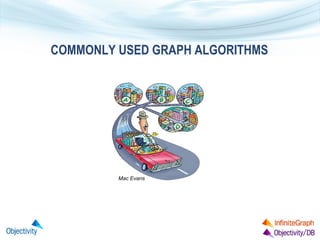
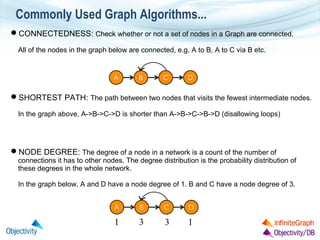
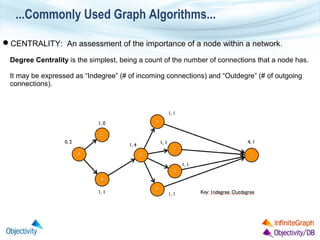
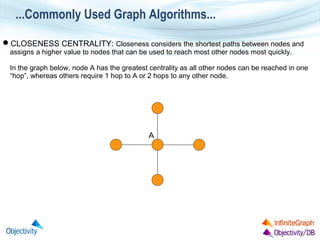
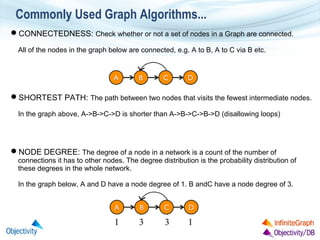
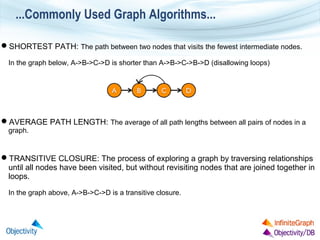
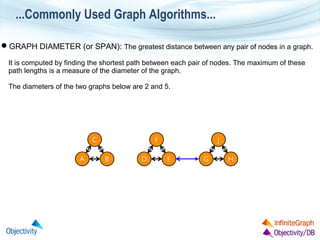
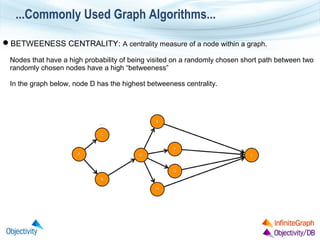
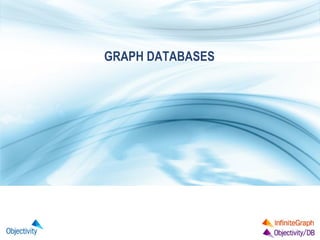
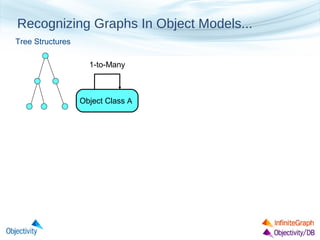
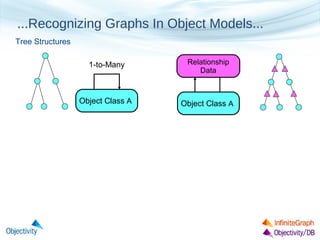
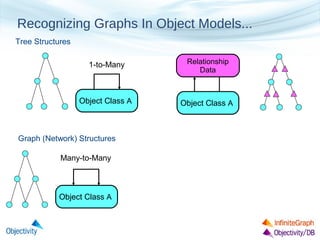
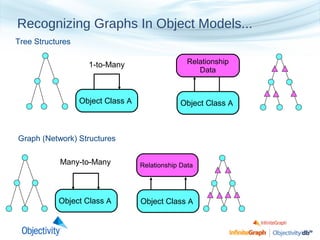
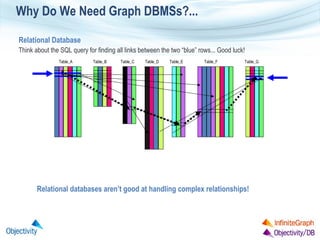
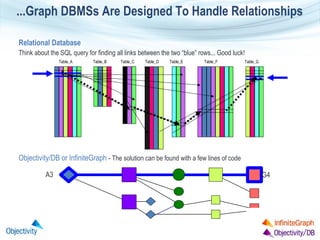
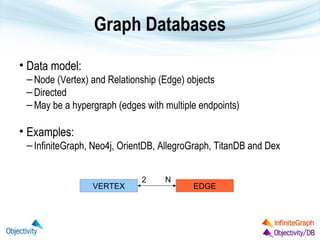
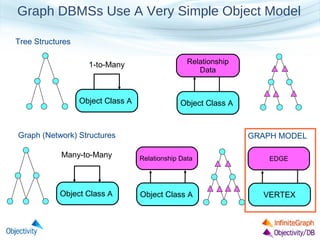
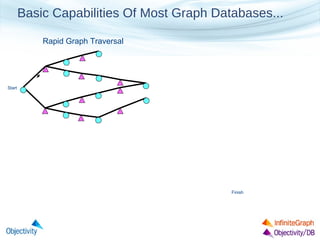
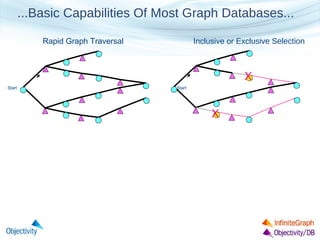
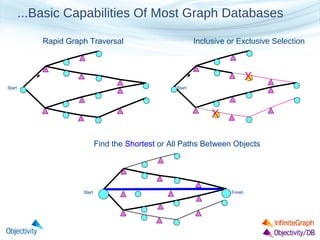
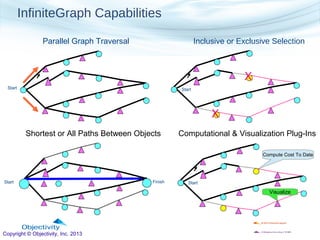
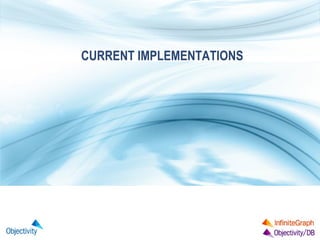
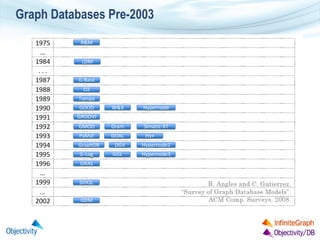
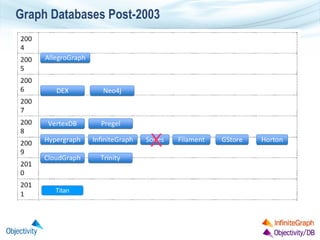
![Graph Databases Compared [UNSW]
DATA STORAGE FEATURES](https://image.slidesharecdn.com/objectivitytutorialaug202013-131021155903-phpapp01/85/An-Introduction-to-Graph-Databases-33-320.jpg)
![Graph Databases Compared [DZone]
Source: http://goo.gl/ni4eoE](https://image.slidesharecdn.com/objectivitytutorialaug202013-131021155903-phpapp01/85/An-Introduction-to-Graph-Databases-34-320.jpg)
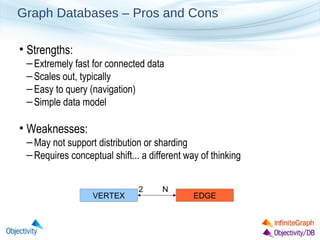
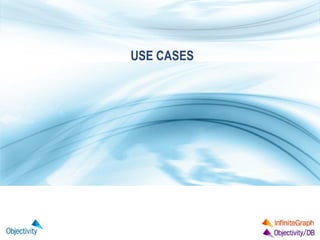
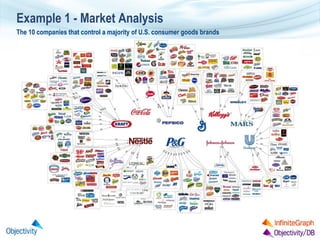
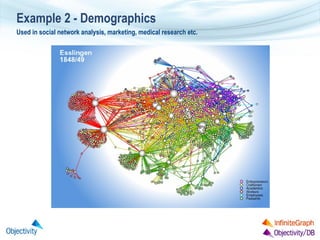
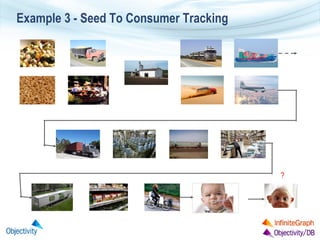
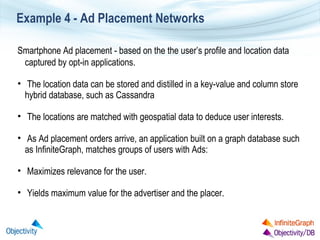
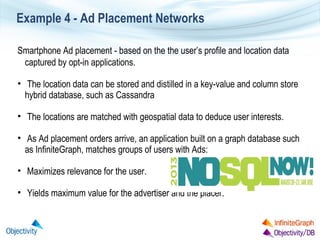
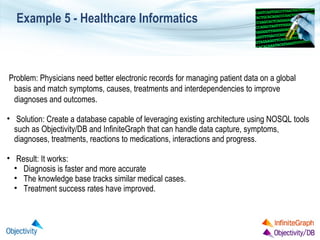
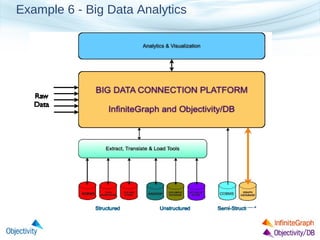
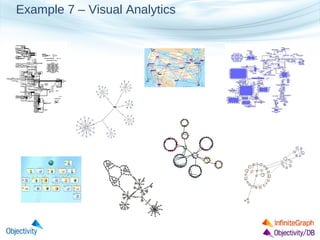
![Hands On With A Graph Database
• We'll be using InfiniteGraph today
• You'll need a Java Development environment on your machine
• If you haven't downloaded InfiniteGraph already, please go to:
http://goo.gl/XzJo6T [https://download.infinitegraph.com/index.aspx]
• We'll be covering a HelloGraph and a more complex sample program](https://image.slidesharecdn.com/objectivitytutorialaug202013-131021155903-phpapp01/85/An-Introduction-to-Graph-Databases-45-320.jpg)